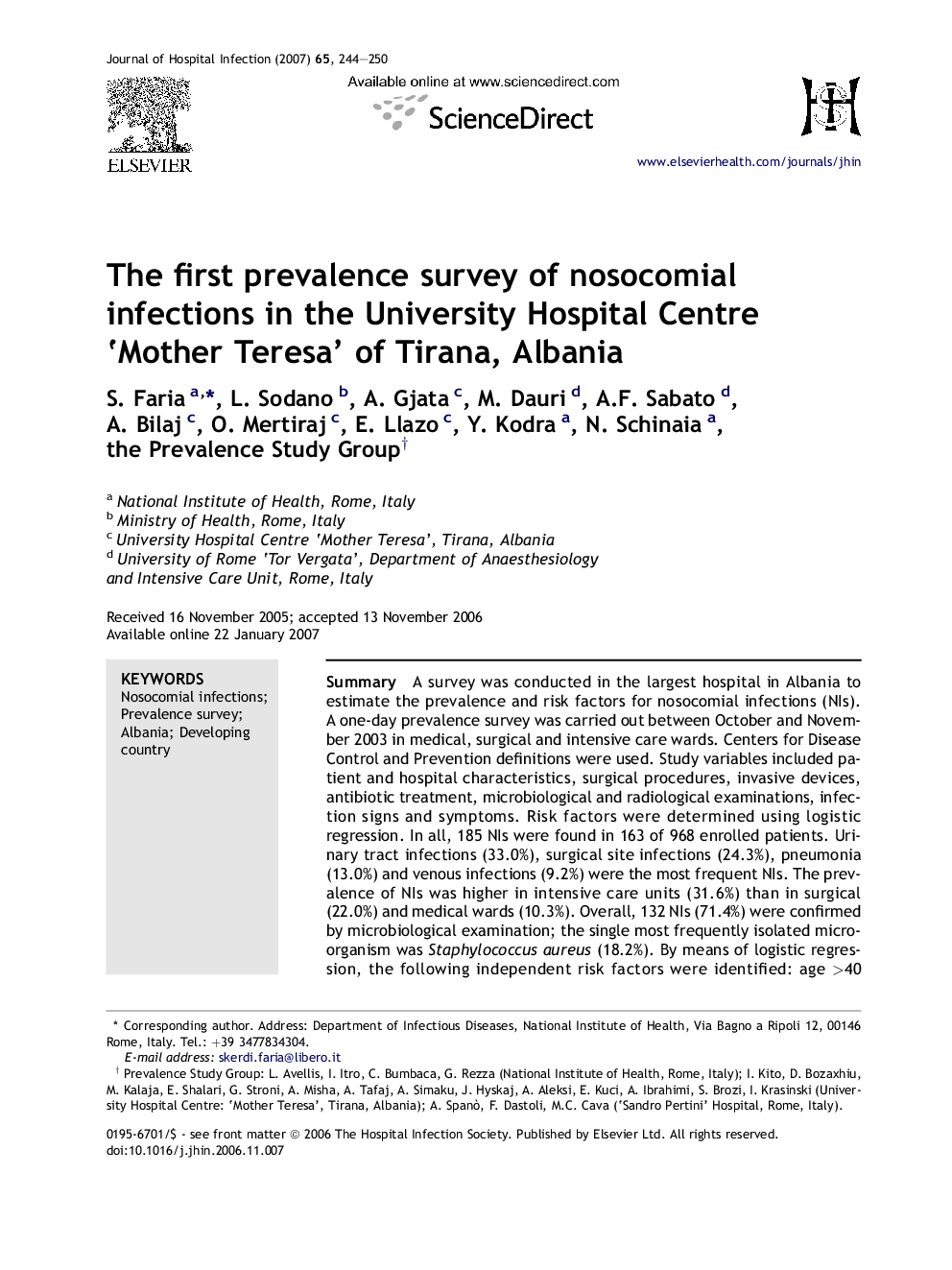| Article ID | Journal | Published Year | Pages | File Type |
|---|---|---|---|---|
| 3373714 | Journal of Hospital Infection | 2007 | 7 Pages |
SummaryA survey was conducted in the largest hospital in Albania to estimate the prevalence and risk factors for nosocomial infections (NIs). A one-day prevalence survey was carried out between October and November 2003 in medical, surgical and intensive care wards. Centers for Disease Control and Prevention definitions were used. Study variables included patient and hospital characteristics, surgical procedures, invasive devices, antibiotic treatment, microbiological and radiological examinations, infection signs and symptoms. Risk factors were determined using logistic regression. In all, 185 NIs were found in 163 of 968 enrolled patients. Urinary tract infections (33.0%), surgical site infections (24.3%), pneumonia (13.0%) and venous infections (9.2%) were the most frequent NIs. The prevalence of NIs was higher in intensive care units (31.6%) than in surgical (22.0%) and medical wards (10.3%). Overall, 132 NIs (71.4%) were confirmed by microbiological examination; the single most frequently isolated micro-organism was Staphylococcus aureus (18.2%). By means of logistic regression, the following independent risk factors were identified: age >40 years, length of hospital stay, ‘trauma’ diagnosis at admission, and invasive devices. Even though comparisons must be made with great caution, the prevalence of NIs was higher than in western European countries and in some developing countries.
